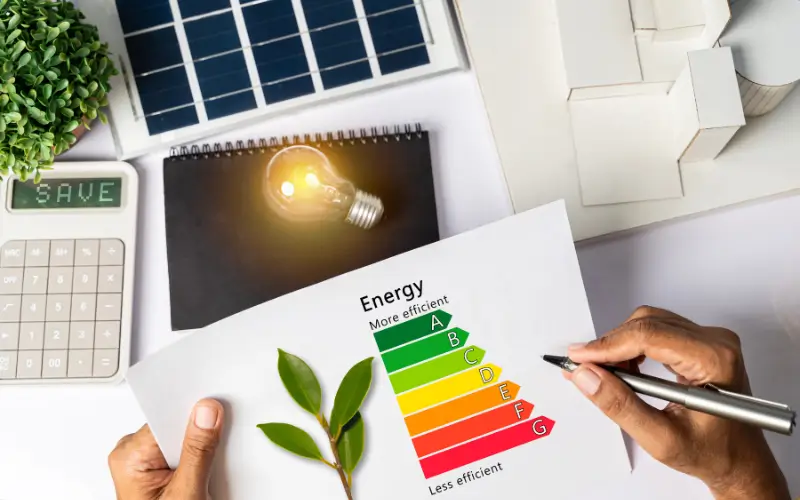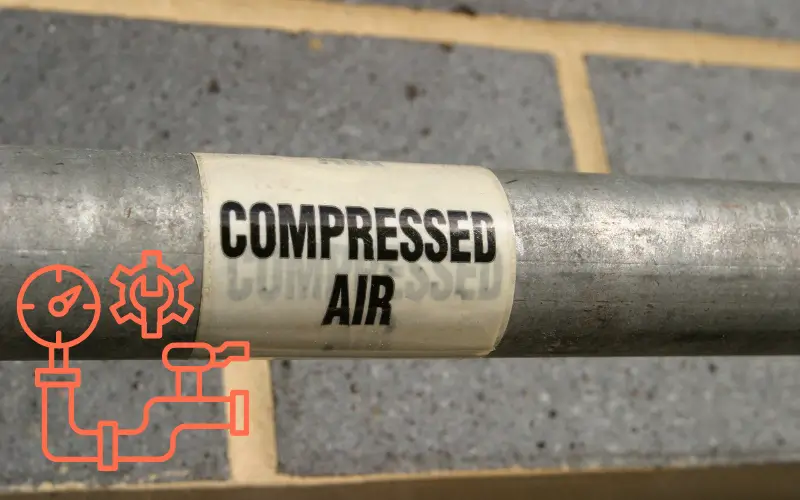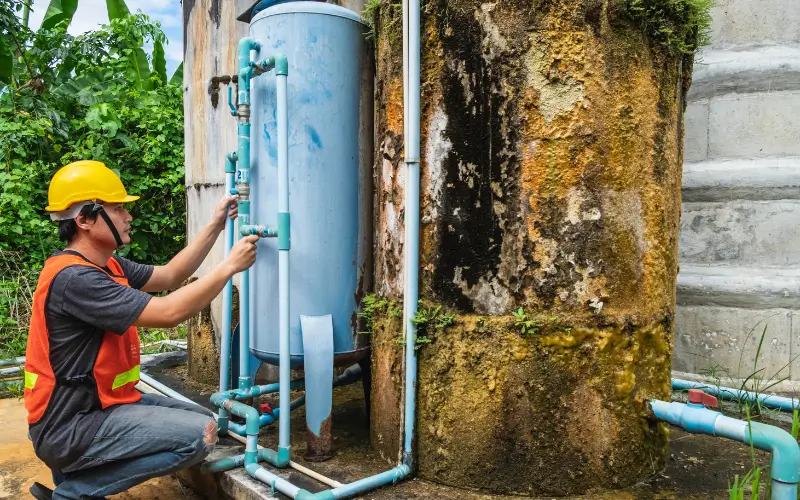The garment industry is one of the most energy-intensive sectors in the global economy, consuming significant amounts of electricity and thermal energy throughout its production processes. From spinning and weaving to dyeing and finishing, energy use is integral to every step of garment manufacturing. However, this energy consumption comes with a high environmental cost, contributing to greenhouse gas emissions and increasing the industry’s carbon footprint.
As global awareness of climate change and environmental sustainability grows, the need for energy efficiency in the garment industry has never been more critical. By adopting energy-efficient practices, garment manufacturers can not only reduce their environmental impact but also significantly lower operational costs and improve competitiveness in a rapidly evolving market.
This article explores why energy efficiency is crucial for the garments industry, delving into the key areas of energy consumption, the economic and environmental benefits of efficiency, and practical strategies for reducing energy use. We’ll also highlight success stories from leading garment manufacturers, discuss challenges to implementation, and examine the future role of policy and technological innovation in driving energy-efficient practices. Let’s dive in!
Understanding Energy Consumption in the Garment Industry
Energy is a fundamental input in every stage of garment production. Understanding where and how energy is consumed helps manufacturers identify opportunities for improvements and cost savings.
Major Energy-Consuming Processes
Spinning and Knitting
Spinning and knitting are among the most energy-intensive processes in garment production. Spinning, in particular, involves high-speed motors and machinery that convert fibers into yarn, consuming significant amounts of electricity. Similarly, knitting machines operate continuously, adding to the factory’s overall energy demand.
Dyeing and Finishing
Dyeing and finishing processes require substantial thermal energy to heat water and chemicals. Dyeing units typically operate at elevated temperatures and pressures, which can consume up to 60% of a factory’s total energy use. In addition to electricity for machinery, boilers and steam generation systems are crucial for this stage.
Sewing Operations
Sewing is a labor-intensive process, but industrial sewing machines still require electricity to operate. While not as energy-intensive as dyeing or spinning, the sheer number of sewing machines operating simultaneously across large factories can result in significant energy consumption.
Lighting and HVAC Systems
Lighting, heating, ventilation, and air conditioning (HVAC) systems are critical for maintaining safe and comfortable working conditions. In many factories, these systems operate around the clock, contributing significantly to energy bills.
Energy Consumption Patterns
Shift Operations
The energy consumption of garment factories can vary significantly depending on their operational hours. Factories running multiple shifts often have higher energy demands compared to those operating on a single shift.
Equipment Maintenance
Proper maintenance is essential for ensuring energy efficiency. Equipment that is poorly maintained or outdated tends to consume more energy due to inefficiencies and performance issues. Regular maintenance and upgrades are key to controlling energy costs and minimizing waste.
The Importance of Energy Efficiency in Garment Manufacturing
Energy efficiency goes beyond simply reducing energy bills. It plays a critical role in enhancing the sustainability, profitability, and competitiveness of garment manufacturers.
Economic Benefits
Cost Reduction
One of the most immediate advantages of energy efficiency is the reduction in operational costs. By adopting energy-efficient machinery, optimizing production processes, and minimizing waste, garment factories can achieve significant savings on their energy bills. In a highly competitive industry, these savings can be a major factor in maintaining profitability.
Return on Investment
While investing in energy-efficient equipment or processes may involve higher upfront costs, the long-term savings can be substantial. Many garment manufacturers find that these investments pay for themselves within a few years, delivering continuous savings over time.
Environmental Impact
Carbon Footprint
The garment industry is a major contributor to greenhouse gas emissions. Improving energy efficiency reduces the amount of fossil fuels burned to generate electricity and heat, directly lowering carbon dioxide and other greenhouse gas emissions. This is crucial for garment companies aiming to align with global climate goals and reduce their environmental impact.
Resource Conservation
Energy efficiency also promotes responsible use of resources. By reducing energy waste, garment manufacturers can decrease their dependence on non-renewable resources and contribute to a more sustainable production model.
Regulatory Compliance and Market Demand
Sustainability Standards
Governments and international bodies are increasingly enforcing regulations to limit industrial energy use and carbon emissions. Energy efficiency measures help garment factories comply with these regulations and avoid costly fines or restrictions.
Consumer Expectations
Today’s consumers are more environmentally conscious than ever. Many prefer brands that prioritize sustainability and eco-friendly practices. Garment manufacturers that demonstrate a commitment to energy efficiency and environmental responsibility can enhance their brand reputation and appeal to these increasingly discerning customers.
Strategies for Enhancing Energy Efficiency
Achieving energy efficiency in the garment industry requires a combination of technological upgrades, operational changes, and workforce involvement. Here’s how garment manufacturers can take actionable steps to become more energy efficient:
Conducting Energy Audits
Assessment
Energy audits are the starting point for any energy efficiency initiative. These audits involve a thorough examination of all energy-consuming processes, equipment, and systems to identify where energy is being wasted. Key areas of focus include machinery performance, lighting systems, heating and cooling equipment, and process flows.
Implementation
After identifying opportunities for improvement, factories can develop an action plan for implementing energy-saving measures. This might include retrofitting equipment, adopting new technologies, or simply adjusting operational practices to minimize waste.
Upgrading Equipment and Technology
Energy-Efficient Machinery
Outdated or poorly maintained equipment can consume much more energy than modern, energy-efficient alternatives. Replacing old machines with newer models designed for energy savings can lead to significant cost reductions.
Automation
Automation can also improve energy efficiency by streamlining processes and reducing unnecessary energy use. Automated systems can optimize production speeds, reduce idle times, and ensure machinery operates at peak efficiency.
Process Optimization
Lean Manufacturing
Lean manufacturing principles focus on minimizing waste in all forms, including energy waste. By identifying and eliminating non-value-adding activities, factories can reduce energy usage and improve overall productivity.
Maintenance Practices
Regular maintenance of machinery and equipment ensures that systems operate at maximum efficiency. Well-maintained machines require less energy to perform the same tasks, helping reduce overall energy consumption.
Employee Engagement and Training
Awareness Programs
Employees play a crucial role in achieving energy efficiency. Awareness programs can educate workers about energy-saving practices and help build a culture of sustainability throughout the organization.
Incentives
Many garment factories find that offering incentives for energy-saving ideas or practices can encourage staff to actively participate in energy conservation efforts. Simple rewards or recognition programs can motivate employees to adopt more energy-efficient behaviors.
Case Studies: Successful Implementation of Energy Efficiency
Real-world examples can provide valuable insights and inspire garment manufacturers to take action. Here are two notable case studies demonstrating the successful implementation of energy efficiency measures in the garment industry:
TAL Apparel
Initiatives
TAL Apparel, one of the world’s largest garment manufacturers, recognized the impact of energy costs on their bottom line and the environment. They took a proactive approach by participating in demand response programs, which adjust energy consumption based on peak and off-peak periods to reduce overall energy demand.
Outcomes
Through these programs, TAL Apparel achieved significant reductions in energy usage during peak hours, leading to substantial cost savings. Additionally, this initiative improved the factory’s sustainability profile and demonstrated a strong commitment to environmental responsibility.
Coats Group
Actions
Coats Group, a global leader in thread manufacturing, focused on improving its lighting systems. They replaced traditional fluorescent and incandescent lighting with energy-efficient LED systems across their production facilities.
Results
This switch to LED lighting resulted in a 60% reduction in lighting-related energy consumption. Beyond the cost savings, Coats Group also reported improved lighting quality, which enhanced workplace safety and boosted employee morale.
Challenges in Adopting Energy Efficiency Measures
While the benefits of energy efficiency are clear, garment manufacturers often face significant obstacles in implementing these initiatives. Understanding these challenges can help stakeholders develop strategies to overcome them.
Financial Constraints
Initial Investment
Energy-efficient machinery and retrofitting projects often require substantial upfront investments. Many small- and medium-sized garment manufacturers operate on thin margins, making it difficult to allocate funds for new equipment or upgrades.
Access to Funding
Securing external financing can be another hurdle. Some garment factories may lack the credit history or collateral needed to access loans or grants for energy-efficient improvements. Government incentives and support programs can help bridge this gap, but they’re not always accessible to every manufacturer.
Technical Barriers
Lack of Expertise
Implementing energy-efficient solutions requires specialized knowledge. Some garment manufacturers may not have the technical expertise needed to conduct energy audits or identify the most effective energy-saving measures.
Infrastructure Limitations
Older factories may face significant structural or technological limitations that make it difficult to implement modern energy-saving solutions. Retrofitting outdated systems can be complex and costly.
Organizational Resistance
Change Management
Introducing new energy-efficient processes often requires changes to established workflows. Employees and managers may resist these changes due to concerns about productivity, job security, or increased workloads.
Employee Buy-In
Energy efficiency measures are most effective when employees are actively involved. However, motivating staff to adopt new practices can be challenging, particularly in workplaces where energy efficiency is not yet part of the company culture.
Future Outlook: The Role of Policy and Innovation
Looking ahead, energy efficiency in the garment industry will continue to evolve, driven by supportive policies and cutting-edge technologies. These factors will play a pivotal role in transforming the industry into a more sustainable and competitive sector.
Government Policies and Incentives
Regulatory Frameworks
Governments around the world are increasingly recognizing the importance of industrial energy efficiency. Regulatory frameworks such as energy efficiency mandates, emission reduction targets, and building codes are being put in place to encourage factories to reduce their energy footprint.
Financial Incentives
Many governments offer grants, low-interest loans, and tax breaks to support energy efficiency projects in manufacturing. These financial incentives help offset the upfront costs of implementing energy-saving measures, making it easier for garment manufacturers—especially small and medium enterprises—to invest in sustainable practices.
Technological Advancements
Smart Technologies
The rise of Industry 4.0 has paved the way for smarter, more efficient garment manufacturing processes. Smart meters, sensors, and energy management systems can provide real-time data on energy use, allowing factories to monitor consumption patterns and identify waste. By using this data, manufacturers can make data-driven decisions to optimize energy use and improve overall efficiency.
Renewable Energy Sources
In addition to improving energy efficiency, many garment factories are exploring renewable energy sources, such as solar or wind power, to reduce their reliance on fossil fuels. These renewable energy options not only cut down on carbon emissions but also provide long-term energy security.
Conclusion
Energy efficiency is no longer a luxury but a necessity for the garment industry. As one of the most energy-intensive manufacturing sectors, the garments industry faces significant economic, environmental, and regulatory pressures to reduce its energy consumption. By understanding where energy is used and implementing effective strategies—from conducting audits to upgrading equipment and engaging employees—garment manufacturers can significantly reduce costs, minimize environmental impact, and stay competitive in a demanding market.
The challenges are real, ranging from financial barriers to organizational resistance, but they are surmountable with the right policies, technologies, and a commitment to change. Looking ahead, government incentives and smart technologies will continue to drive progress, enabling the garment industry to become more sustainable and resilient.
For stakeholders at every level, investing in energy efficiency is a critical step toward building a greener, more profitable future for the garment industry.
Frequently Asked Questions (FAQs)
What are the primary sources of energy consumption in garment manufacturing?
The main energy consumers include spinning and knitting machines, dyeing and finishing processes, sewing operations, and lighting and HVAC systems.
How can energy audits help improve energy efficiency in garment factories?
Energy audits identify areas where energy is wasted and recommend targeted improvements, helping factories reduce consumption and costs.
What are some cost-effective energy-saving measures for small garment factories?
Simple measures include switching to LED lighting, maintaining equipment regularly, optimizing production schedules, and training employees on energy-saving practices.
How does energy efficiency impact the competitiveness of garment manufacturers?
Energy efficiency reduces operational costs, supports compliance with environmental regulations, and enhances brand reputation—key factors in a competitive market.
What role do government policies play in promoting energy efficiency in the garment industry?
Governments provide regulations, incentives, and financial support to encourage manufacturers to adopt energy-saving technologies and practices.




